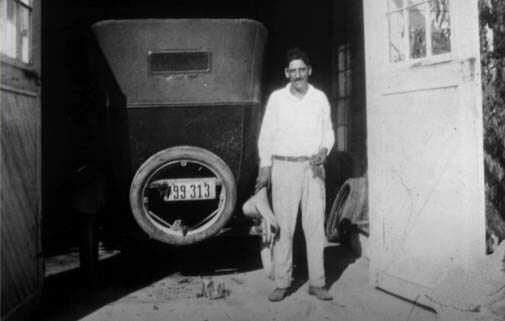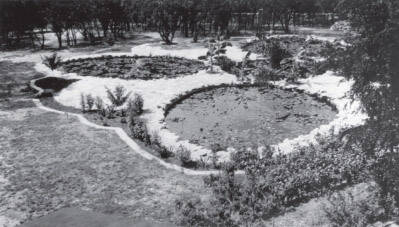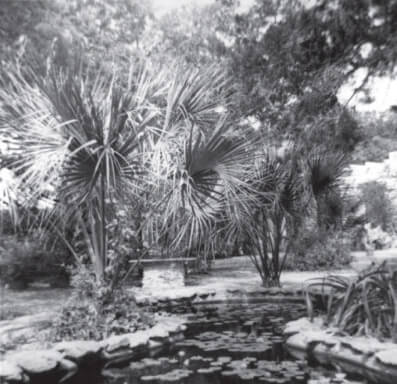Mayfield History

Allison Mayfield
Originally built in the 1870s, the cottage was purchased by Lulu and Allison Mayfield in 1909.
Allison Mayfield purchased the board and batten, twin-gabled cottage and 23 acres for his family as a summer and weekend retreat in 1909. A prominent Austin political figure, Mr. Mayfield was Chairman of the Railroad Commission and former Texas Secretary of State.
The Gutsches
Allison and his wife had one child, Mary Frances, who married Milton Gutsch in 1918. Dr. Gutsch was Chairman of the History Department at the University of Texas for many years. As a young couple, Mary and Milton moved into the cottage in 1922 and added porches to three sides of the house, reflecting the Bungalow style of the early 20th century.
Mary Frances designed the gardens while Milton directed the building of the stone walls, ponds, and garden features with the help of Esteban Arredondo, resident gardener for many years. The peacocks were gifts from friends in 1935 and their descendants are here today. Mary Mayfield Gutsch died in 1971 and left the home and acreage to the City of Austin to be used as a park.

Making It Happen
The garden development was a collaborative effort between Steve Arredondo and the Gutsches. He and Mary combed the land around Mount Bonnell and Lake McDonald (now Lake Austin) for native plants like mountain laurel, redbud, Mexican plum and yucca to transplant into the garden. He and Dr. Gutsch worked on heavier construction projects including the ponds, walks, and other structures.




Early Features
The lily ponds were completed by 1930 to house dozens of varieties of water lilies. Beginning with the front gates, they began construction of perimeter walls in 1932, finishing them by 1937. Although the Gutsches purchased local field stone for $1.50 to $3 per truckload to build the walls, they gathered native limestone on the property to outline the flower beds and build the rock garden.
While they continued to make minor changes in planting and add small features collected while traveling over the years, most of the major elements of the gardens were in place by 1940. The resulting house and grounds formed a picturesque composition drawn from landscape styles prevalent during the early 20th century.


The Mayfield Park Community Project launched a restoration program in 1988 to ensure the survival of this significant resource. Current conditions of the grounds reflect their effort to recapture the garden’s character at its peak by restoring the house as well as original plant varieties that had been lost over time.
Historical Context
Access detailed documents that provide information about the origins, development, and significant events of Mayfield Park. Download these PDFs to gain a better understanding of the historical context and evolution of this valued community space.
